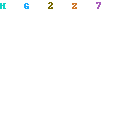 In India, the last national census in 2001 recorded just under 70,000 Parsis – Zoroastrians who follow the prophet Zarathustra and worship one god, the creator of the universe, Ahura Mazda. —AFP Photo
In India, the last national census in 2001 recorded just under 70,000 Parsis – Zoroastrians who follow the prophet Zarathustra and worship one god, the creator of the universe, Ahura Mazda. —AFP Photo MUMBAI: India’s Parsis, the modern-day descendants of migrants who fled persecution in Iran more than 1,000 years ago, are turning to new technology to keep their ancient Zoroastrian religion alive.
Websites, blogs, on-line directories and matchmaking portals are being used by the close-knit but scattered and shrinking community to stay in touch and true to the 3,500-year-old faith.
‘The Parsis are a community without borders. We’re almost all over the world,’ said Yazdi Tantra, who runs a computer consultancy firm in Mumbai, where 70 per cent of the world’s Parsis live.
‘We have this technology so that we can keep in contact because our numbers are very small. If there was no technology, we wouldn’t communicate with one another... it keeps the community together,’ he told AFP.
Tantra runs several websites, including the www.zoroastrians.net portal, which includes everything from suggestions for Parsi baby names to traditional Parsi food, adding to a global network of sites on the community and religion.
What started out as being ‘just for fun’ and a way to catalogue Parsi contacts for his own use three years ago unearthed an enthusiastic online community in India and across the world, he said.
‘Our website does a lot of connecting people,’ he added.
Such connections are more important than ever as the largely prosperous, urbanised minority that produced the likes of Indian industrialist Ratan Tata, conductor Zubin Mehta and Queen singer Freddie Mercury gets smaller every year.
The editor of ‘Parsiana’ magazine, Jehangir Patel, told AFP that there were now only about 90,000 Parsis around the world ‘at most’, as a low birth rate, marriage outside the community and emigration takes its toll.
In India, the last national census in 2001 recorded just under 70,000 Parsis – Zoroastrians who follow the prophet Zarathustra and worship one god, the creator of the universe, Ahura Mazda.
They believe that good thoughts, good words and good deeds will triumph over evil and chaos, and the ancient religion is said to have influenced Christianity, Judaism and Islam.
But demographers predict that there could be as few as 32,000 Parsis left by 2051, based on studies of fertility rates.
In Mumbai, the influential Bombay Parsi Punchayat governing council is looking to young people to save the community by launching what has been called a ‘Facebook for Parsis’ website and a youth wing.
‘Interaction among youngsters will be encouraged so that they find partners through the social events and networking sites, and eventually marry within the community,’ trustee Khojestee Mistry told the Hindustan Times recently.
Zpeakerbox, an online youth magazine for the Zoroastrian community, and the social networking site www.ushtatebook.com already exist.
Elsewhere, Tantra’s theparsidirectory.com and the Parsi Yellow Pages on the ‘Parsiana’ website aim to log as many Parsis as possible plus listings for everything from Parsi accountants to Parsi yoga institutes.
‘As a minority, we tend to stick together,’ said Patel. ‘Almost 33 per cent marry out of the community, so we’re getting a situation about how long people will see themselves as Parsis and how long we exist as a community.’
A debate is raging about whether Parsi women who marry non-Parsis should still be considered part of the community. Traditionalists say they shouldn’t while reformists say they should if the community is to survive.
‘We are always under a cloud. That reflects the need for organisations and associations in the community... It’s a way of sticking together,’ Patel added.
Mumbai architect Arzan Sam Wadia runs parsikhabar.net, one of a number of blogs on Parsi matters. Half of his readers are from outside India, he told AFP from his base in New York.
Online news portals give an immediacy to community news and allow for a range of views that cannot be duplicated by existing print publications, he added.
‘Within Bombay (Mumbai) and outside, just the fact that people are spread out so far and wide geographically, there’s no mainstream publication in the traditional sense that can really do justice to it,’ he said.
Journalist Shernaaz Engineer said her blog, parsi-link.blogspot.com, and others like it were the latest sign of how one of the world’s oldest living faiths was adapting, she told AFP.
It was also a way of avoiding the ‘factionalism’ that has crept in to the Parsi media over issues like marriage outside the community, she said.


0 Comments Received
Post a Comment